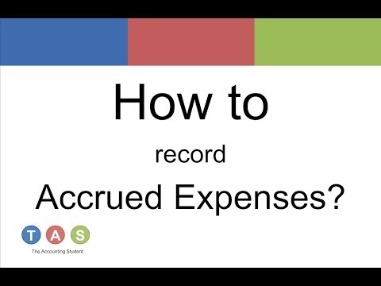However, if you want to create your own general ledger, you’ll first need to understand the basics of double-entry bookkeeping. Use this small business general ledger template to oversee transactions and track your small business’s overall fiscal health. At the top of the ledger, enter the account information and reporting period. For each transaction, record the date, details, post reference, and debit and credit figures to keep an accurate record of all transactions. Use this sample general ledger template with example text and figures to track financial transactions. Enter each transaction date, account type, general ledger account name and number, vendor or client name, and debit or credit figures.
Ledger Accounts FAQs
You can pull your general ledger report, specify an account, and review the details and supporting documentation (invoices, receipts, etc.). By no means are these the only accounts that will show up in the ledger. Businesses have an expansive list of accounts, so you will need to make as many as required to track all transactions. A general ledger account that holds all subsidiary ledger accounts is known as a control account. Make columns on the far left of the page for the date, transaction or journal entry number, and description.
The Double Effects of Transactions in Ledger Accounts
- Understanding what an accounting ledger is and its importance to your business finances can help you organize and track transactions more easily.
- All account records of a company will be listed and contained within the general ledger, or principal book of accounts.
- Most accounting software will compile some of these ledgers while still letting you view them independently.
If there are accounting errors, an accountant can dig into the general ledger and fix them with an adjusting entry. On January 31, after all of the cash journal entries post, the general ledger lists the ending cash balance. Ledgers contain the necessary information to prepare financial statements. We’ve compiled the most comprehensive collection of free general ledger templates for accountants, CEOs, accounts payable and receivable teams, and other bookkeeping personnel. Another important fact to note stems from the fact that total assets are equal to total liabilities and capital at any given time.
Format of a Self-balancing Ledger Account
In other words, it is the collection of all accounts of a business enterprise. Since increases in assets are debited and decreases in assets are credited, a transaction resulting in an increase in one asset and a decrease in another asset will in effect have equal debit and credit entries. The following rules are applied to record these increases and decreases in individual ledger accounts. All entries recorded in the general journal must be transferred to ledger accounts. From these permanent records, periodical statements are prepared to show the trading profit or loss made by the business and its assets and liabilities, at any given date.
The process of transferring information from the General Journal to the General Ledger, for the purpose of summarizing, is known as posting. Entries relating to a particular account are all collected in that capex and opex difference account, and so its position may be known when needed. For example, when furniture is bought on credit for $4,000 from Fine Furniture Co., we will need to make an entry of $4,000 on the debit side of the furniture account (i.e., because this asset is increasing). An important point to note is that the treatment for assets is exactly the opposite of the treatment for liabilities and capital. Batches or groups of similar accounts are kept together, and ledgers are indexed so that information pertaining to a particular account can be obtained quickly.
Hire an accountant or bookkeeper, or learn how to set up the chart of accounts and classifications for your company’s accounting system. Account #1000 is the cash account, and is a partial listing of the general ledger for January 2024. For example, the asset accounts could contain cash in hand, cash in the bank, accounts receivable, prepaid expenses, real estate, machinery, and inventory. It includes the transaction date, particulars of the transaction, folio number, debit amount, and credit amount. Transactions that occur frequently—such as revenues, cash receipts, purchases, and cash payments—are typically recorded as journal entries first. Journalizing is the process of recording transactions in a journal as journal entries.
It provides a permanent and classified record of every element in the business operation. In smaller organizations, loose-leaf systems with multipart forms and carbon paper reduced the number of pyxero times that bookkeepers had to write out the same data. Therefore, it is worthwhile for transactions of a similar nature to be sorted out and accumulated in one place.
This may include parts, supplies, equipment, and inventory for their products. David Baker wants to start a forging factory, where he can manufacture high-quality chef and military knives. On January 1, 2018, he invested a sum of $1,000,000 as capital and started The Damascus Forging Works. He took a bank loan of $750,000 at 5% PA and invested the remaining amount of $250,000 from his savings. In addition, he owns a small shop at a primary location that can be used to start a retail clothing outlet. He purchased furniture, including shelves, a counter desk, and other equipment for the store for $15,000.
Balancing a ledger account involves verifying the total debits equal the total credits for the account. Balancing this account is vital because it ensures that it is accurate and complete. Most businesses use accounting software that posts all financial transactions directly to the general ledger.




